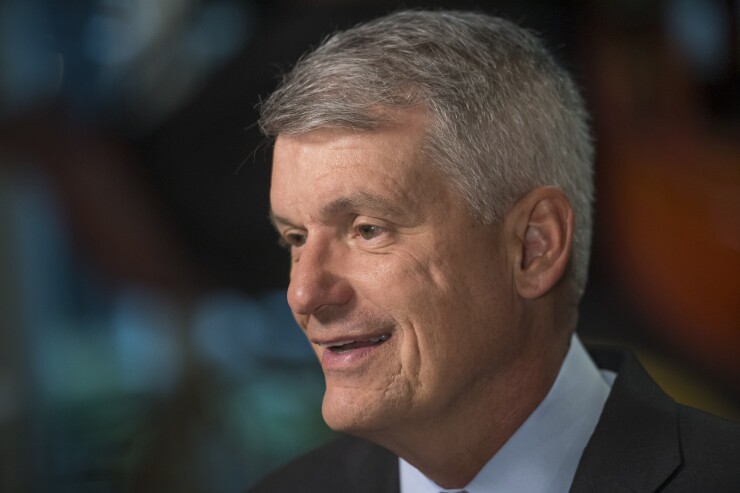Wells Fargo said Thursday that employees opened 3.5 million potentially unauthorized consumer accounts over a nearly eight-year period, a 67% increase from its earlier estimate.
The $1.9 trillion-asset bank had originally put the number of fake accounts at 2.1 million. But it agreed as a part of a consent order with regulators last year to expand its review by four years, which resulted in the significant increase in consumers estimated to be harmed.
Wells said it will provide $2.8 million in refunds and credits to consumers who were harmed, on top of $3.3 million already refunded to consumers last year.

The bank also found that employees opened 528,000 potentially unauthorized bill-payment enrollments, which had not previously been disclosed. Wells will refund $910,000 to bill-pay customers who were harmed.
“We apologize to everyone who was harmed by unacceptable sales practices that occurred in our retail bank,” Wells Fargo CEO Tim Sloan said. “To rebuild trust and to build a better Wells Fargo, our first priority is to make things right for our customers, and the completion of this expanded third-party analysis is an important milestone."
Wells is still trying to recover from the significant hit to its reputation after it agreed to pay $190 million in September 2016 to settle charges that thousands of employees opened millions of bank and credit card accounts in order to collect bonuses and keep their jobs. Wells fired 3,500 rank-and-file employees. Former CEO John Stumpf resigned last October because of the scandal.
Wells agreed as part of the consent order to double its initial review of potentially unauthorized accounts to nearly eight years from four and a half years.
The expanded analysis of more than 165 million retail banking accounts found an additional 981,000 potentially unauthorized accounts were opened from January 2009 to September 2016.
Wells also updated its original estimate to 2.55 million accounts from May 2011 through mid-2015, after refinements to the practices and methodologies.
"Through this expanded review, as well as the class action settlement, free mediation services, and ongoing outreach and complaint resolution, we’ve cast a wide net to reach customers and address their remaining concerns," Sloan said. "Our commitment has never been stronger to build a better bank for our customers, team members, shareholders and communities.”
Wells agreed to pay $142 million in a class-action settlement, Jabbari v. Wells Fargo, that potentially covers all consumers who claim Wells opened a consumer, small business or unsecured credit card account between May 1, 2002, and April 20, 2017.
Wells will be sending notices over the next two months on how consumers who were harmed can join the class.
The bank said it is continuing to work with any customers who have contacted it about harm that could have been caused to their credit score by an unauthorized account.
The bank also is compiling a list of customers who complained about unauthorized accounts that were opened without their consent. Those customers will be notified both by Wells and a court-appointed claims administrator, and will automatically be enrolled in a portion of the class-action settlement, Wells said.





